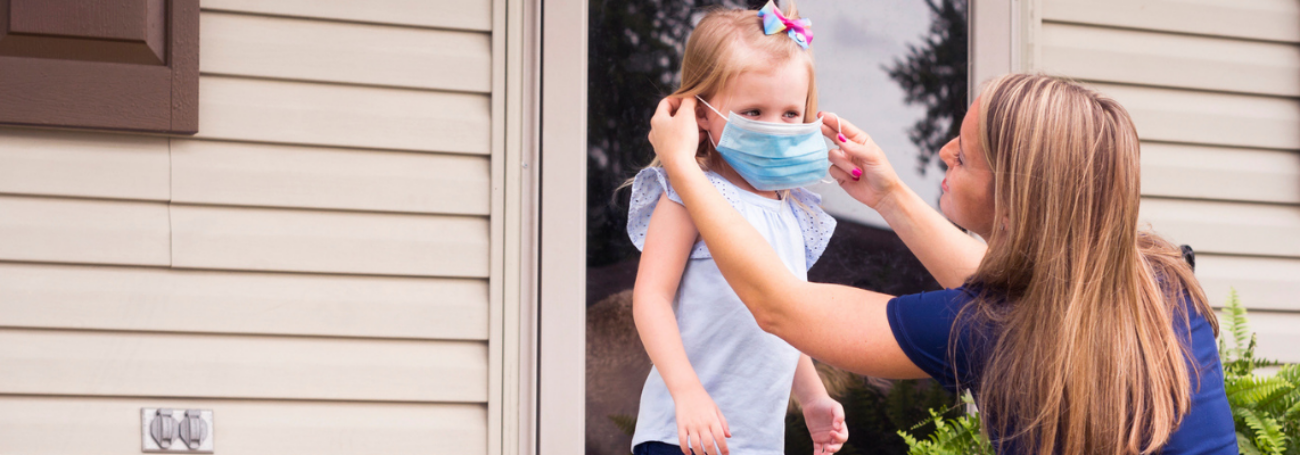
Introduction
The 2021 Home Visiting Yearbook compiles key data on early childhood home visiting, a proven service delivery strategy that helps children and families thrive. Home visiting serves expectant parents and caregivers of young children by connecting them with a designated support person who guides them through the early stages of raising a family.
Home visitors regularly meet with families in their homes or another location of their choice. Services are voluntary and tailored to participants’ needs, positioning the field to advance health equity by supporting families in communities challenged by disparate social, economic, and health outcomes. For example, home visitors can help address social determinants of health, (Source: According to the [Centers for Disease Control and Prevention](https://www.cdc.gov/socialdeterminants/about.html), social determinants of health are “conditions in the places where people live, learn, work, and play that affect a wide range of health risks and outcomes.” They include areas such as access to and the quality of health care, education access and quality, social and community context, economic stability, and neighborhood and built environment. Social determinants of health are impacted by complex social and economic structures (e.g., discrimination, housing access, income, transportation).)Go to footnote #>1 including access to education and social support, among the families they serve.
Home visiting has a long history and a strong evidence base showing that it improves outcomes for children and families. However, until the NHVRC published the 2017 Home Visiting Yearbook, no single source had documented the national home visiting landscape.
This year marks our sixth major publication (five yearbooks and a data supplement) shedding light on who received home visiting and who could benefit. As with previous yearbooks, we examined publicly available data and collected new data—this time from 2020—to present a more up-to-date look at home visiting in action.
What’s New in the Data?
We are pleased to report several data updates in the 2021 Home Visiting Yearbook:
- Inclusion of data on virtual home visits. The 2021 Yearbook includes counts of virtual home visits provided by 21 models to recognize the field’s quick transition to virtual service delivery due to the COVID-19 pandemic.
- Availability of disaggregated maternal and child health data. Not all children and families have the same access to support and services. The 2021 Yearbook includes data disaggregated by race and ethnicity to promote discussion on how home visiting can support infant health, safe and nurturing relationships, and optimal early learning and educational achievement for all families.
- Revised data language with an equity focus. The words we use to describe home visiting data matter. The 2021 Yearbook includes updated language meant to reflect our commitment to creating a more inclusive, equitable future in home visiting.
A Note About COVID-19
Where Do the National Data Come From?
The NHVRC uses model, state, and administrative data sources, along with publicly available information, to present the national home visiting landscape.
National Data Sources for the 2021 Home Visiting Yearbook
| Question addressed | Data type and source | Location in the yearbook |
|---|---|---|
| Where do home visiting programs operate? | List of local agencies active in 2020 ; list of zip code information on families served in 2020 | Evidence-based home visiting maps (by county, by zip code) |
| Who receives evidence-based home visiting services? | Participant demographics ; number of home visits, virtual home visits, and children and families served | National profile |
| Who receives Maternal, Infant, and Early Childhood Home Visiting (MIECHV) Program-funded home visiting services? | Administrative MIECHV data | National MIECHV summary |
| Who receives Tribal MIECHV-funded home visiting services? | Administrative Tribal MIECHV data | Tribal MIECHV summary |
| Who receives home visiting services from tribal-led organizations? | Number of home visits, virtual home visits, and children and families served |
Tribal-led organizations summary |
| Who receives home visiting services from emerging models? | Participant demographics ; number of home visits, virtual home visits, and children and families served |
Emerging models summary |
| How many families and children could benefit from home visiting? | Counts of potential beneficiaries and their demographics | Potential beneficiaries tables (priority populations, high-priority families, child characteristics, family characteristics) |
| Who provides home visiting? | Counts of home visitors and supervisors | Home visitors and supervisors summary |